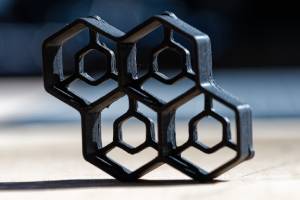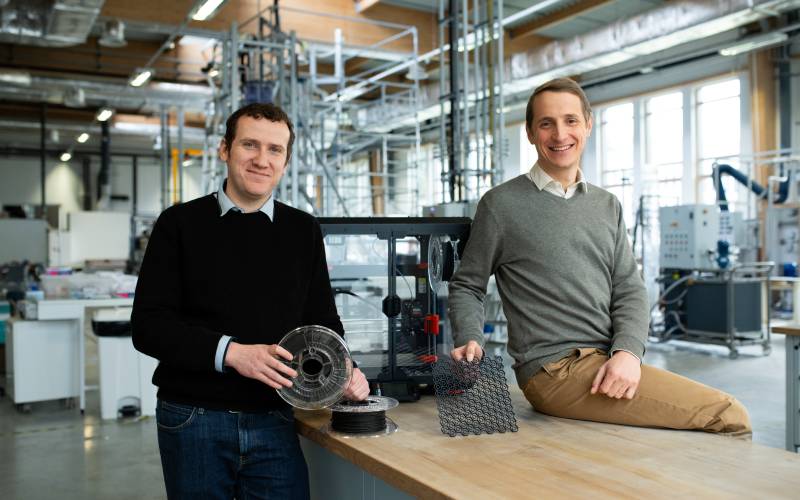HYMAG’IN, a company co-founded by Camille Crouzet, a graduate of Grenoble INP - Phelma, UGA in 2013, has just raised €2.2 million to roll out its technology on an industrial scale and address the embedded electronics markets. The technology was developed at the ISTerre* laboratory, where Camille Crouzet completed his thesis after obtaining an engineering degree. During this period, he developed and patented a process for the hydrothermal synthesis of nanopowders with interesting magnetic properties.
This was a great idea, as the process enables the recycling of waste and co-products from the steel industry. In the laboratory, he met Céline Bonnaud, also a Phelma graduate, and Philippe Le Bouteiller, with whom he formed a partnership to create HYMAG’IN. Their initial idea was to use the properties of magnetite powders to remove pollution from contaminated water and soil, but they soon shelved the idea and concentrated on using ferrites.** Ferrites will be used to solve the electromagnetic compatibility (EMC) issues that are increasingly prevalent in industry.
“Ferrites have the unique ability to dissipate electromagnetic radiation at certain frequencies, absorbing the waves and rejecting energy in the form of heat,” explains Camille Crouzet.
“They are used in electronic systems to solve problems of interference and electromagnetic compatibility.”
 A wide range of fields
A wide range of fields
With the rapid proliferation of connected objects, the arrival of autonomous vehicles and 6G networks, electromagnetic compatibility issues are becoming increasingly difficult to resolve, and require innovative solutions.
In addition to powders, which can be integrated into a polymer matrix, HYMAG’IN offers its ferrites in filament form for 3D printing. Compared with the products of Asian competitors, who supply solid ferrites, this means a 10-fold improvement in the performance/weight ratio of the systems, while using a recycled resource.
The funds raised by HYMAG’IN will enable the company to step up its sales activities in France and abroad, and increase its workforce from 7 to 12. But above all, they will be used to pursue the industrialisation of the technology: the start-up has given itself 18 months to develop a demonstrator and scale up to industrial production.
*UGA, CNRS, Université Savoie Mont-Blanc, IRD, Université Gustave Eiffel
**A family of materials similar to magnetites, with more advanced properties




 A wide range of fields
A wide range of fields